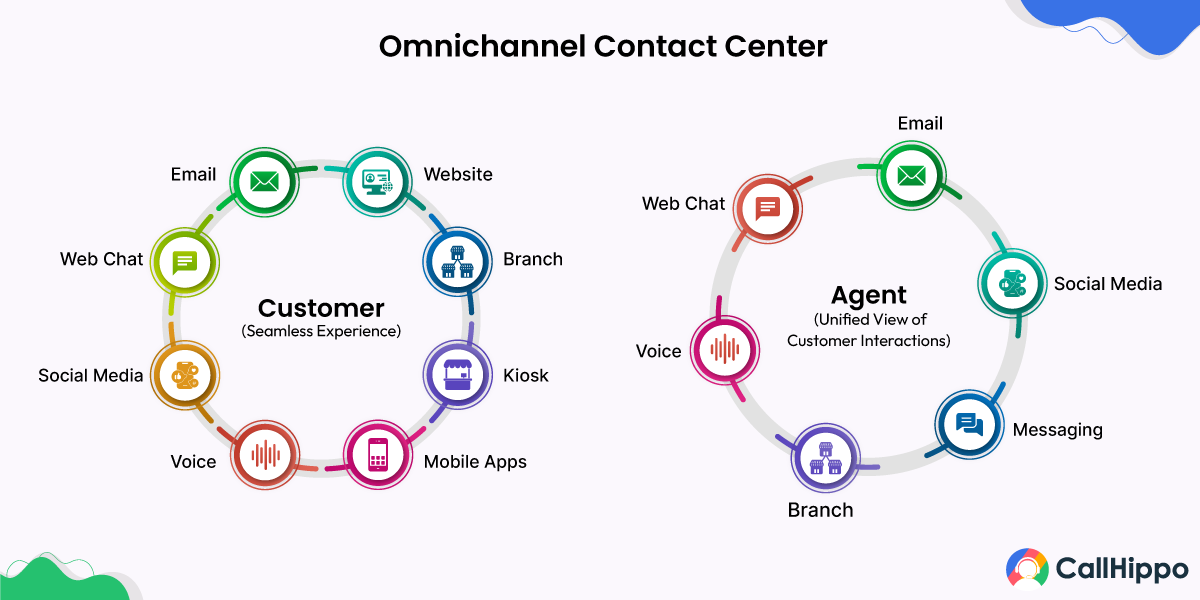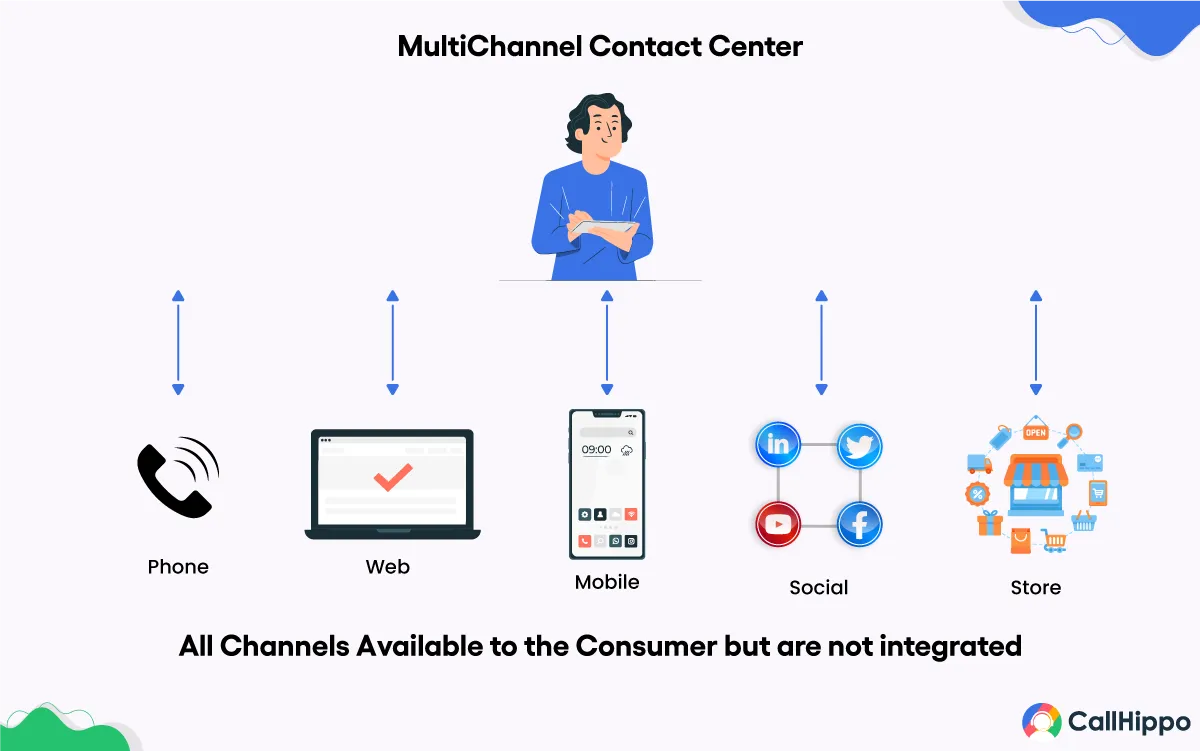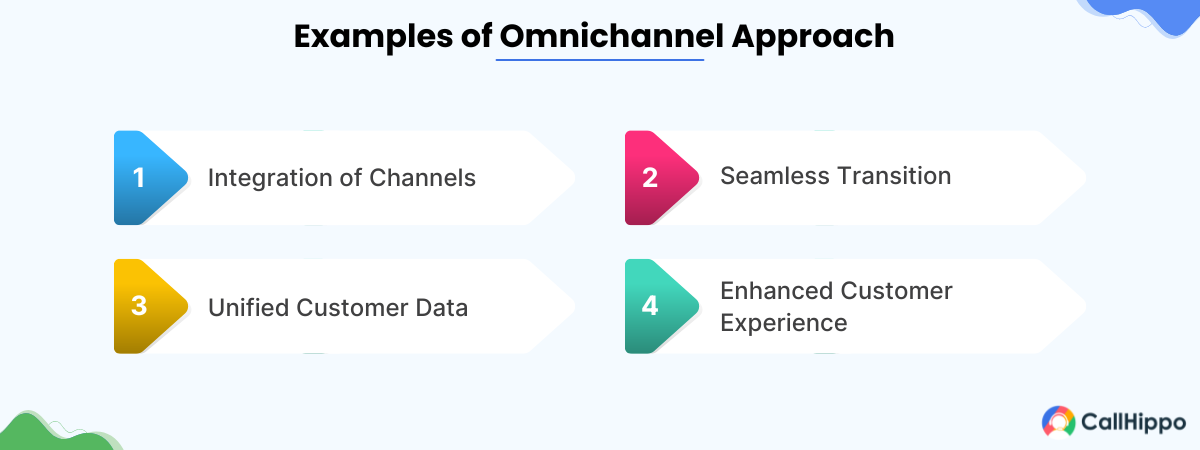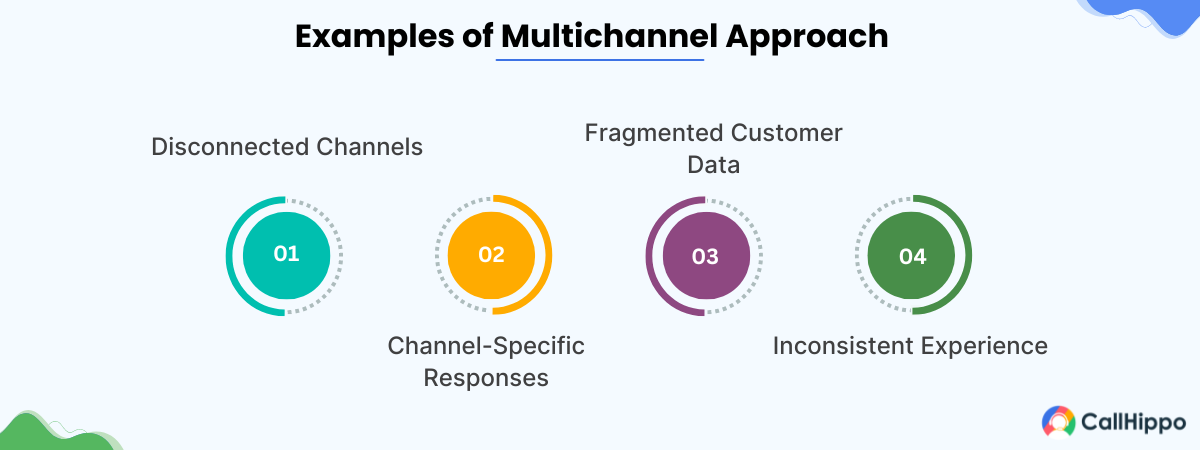When it comes to customer service, businesses are continuously seeking ways to improve their engagement and support strategies. Two prominent approaches in this domain are omnichannel and multichannel contact centers. While both aim to enhance customer experience, they differ significantly in their execution and capabilities.
Understanding these differences is crucial for businesses looking to optimize their customer service operations and deliver seamless, personalized interactions. This blog will delve into the definitions, features, and advantages of omnichannel and multichannel contact centers to help you make an informed decision.
Prioritize seamless integration of channels and data to provide a unified customer experience. Focus on personalization and context-aware interactions to meet individual needs and foster long-term loyalty. Regularly analyze customer feedback and behavior to refine your omnichannel strategy and stay ahead in a competitive market.
What Is Omnichannel Contact Center?
An omnichannel contact center integrates various communication channels into a single, cohesive system, allowing seamless interaction across multiple platforms. Customers can start a conversation on one channel and continue it on another without losing context. For example, a customer may initiate contact through a live chat, follow up via email, and resolve their issue over the phone, all within a unified thread.

This integration ensures that agents have a comprehensive view of the customer’s history and can provide personalized, efficient support. The goal of an omnichannel approach is to create a consistent and fluid customer experience, regardless of the channel used.
Key features of an omnichannel contact center include –
1. Unified Customer View
All interactions and data are consolidated, giving agents a complete understanding of the customer journey.
2. Seamless Channel Transition
Customers can switch between channels without repeating information.
3. Consistent Experience
Uniform service quality and branding across all touchpoints.
4. Enhanced Personalization
Leveraging integrated data to tailor responses and solutions to individual customer needs.
What Is Multichannel Contact Center?
A multichannel contact center offers multiple communication channels for customer interactions, such as phone, email, live chat, social media, and more. However, unlike omnichannel centers, these channels operate in silos. Each channel is managed separately, and there is no integration to provide a unified view of the customer’s interactions.

This means if a customer reaches out via email and then follows up with a phone call, the agent may not have access to previous communications, potentially leading to repetitive explanations and fragmented service.
Key features of a multichannel contact center include –
1. Variety of Channels
Multiple platforms for customer interaction, catering to different preferences.
2. Channel-Specific Management
Separate teams or systems handle interactions on different channels.
3. Independent Operations
Limited or no integration between channels, leading to isolated customer interactions.
4. Basic Customer Interaction
Focus on offering multiple touchpoints rather than a cohesive experience.
Difference Between Omnichannel and Multichannel
In customer service, the terms “omnichannel” and “multichannel” often come up when discussing strategies for managing customer interactions. While they may seem similar at first glance, there are significant differences between these two approaches that can impact the quality of service and customer satisfaction. Here, we explore these differences in detail.
| Aspect | Omnichannel Contact Centers | Multichannel Contact Centers |
|---|---|---|
| Integration of Channels | Multiple channels operate independently, with no integration, leading to isolated data silos. | |
| Customer Experience | Experience may vary significantly between channels, potentially leading to inconsistency and fragmented service. | |
| Transition Between Channels | Customers often need to repeat themselves when switching channels, as each channel operates in isolation. | |
| Data Management | Data is stored separately for each channel, resulting in fragmented and incomplete customer profiles. | |
| Operational Efficiency | Separate systems for each channel can lead to duplicated efforts and inefficiencies. | |
| Technological Requirements | Involves managing multiple standalone systems, which can increase complexity and maintenance efforts. |
This table summarizes the main distinctions between omnichannel and multichannel contact centers, helping businesses understand the differences and make informed decisions about their customer service strategies.
Omnichannel vs Multichannel Example
For instance, you run an online retail business selling a variety of products, from electronics to clothing. Your customer service team handles inquiries, order assistance, and product support through various channels, including phone calls, emails, live chat, and social media.
Omnichannel Approach

1. Integration of Channels
A customer named Sarah contacted your company via live chat to inquire about the delivery status of her recent order. Sarah receives prompt assistance from the live chat agent, who provides real-time updates on her order status.
2. Seamless Transition
After the live chat, Sarah realizes she needs more detailed assistance and decides to call the customer service hotline. Despite switching channels, Sarah doesn’t need to repeat her order details or the issue she’s facing. The agent picks up the conversation seamlessly and continues assisting her.
3. Unified Customer Data
The agent handling Sarah’s call has access to the entire history of her interactions with the company, including the live chat session. Armed with this information, the agent can provide personalized assistance tailored to Sarah’s specific needs and preferences.
4. Enhanced Customer Experience
Sarah appreciates the seamless experience and personalized support she receives across different channels. She feels valued as a customer and is more likely to remain loyal to the brand due to the consistent and high-quality service she experiences.
Multichannel Approach

1. Disconnected Channels
Sarah sends an email to customer support inquiring about a product return process. Meanwhile, she also reaches out via direct message on the company’s social media page to ask a similar question.
2. Channel-Specific Responses
The email support team responds promptly to Sarah’s email inquiry, providing detailed instructions on the return process. Simultaneously, a different agent responds to Sarah’s social media message, unaware of the ongoing email conversation.
3. Fragmented Customer Data
Since there’s no integration between the email and social media channels, each agent has only partial information about Sarah’s inquiries. Sarah may need to provide redundant information or clarify details, causing frustration and inefficiency.
4. Inconsistent Experience
Sarah notices inconsistencies in the responses she receives from different channels. She feels disconnected and frustrated due to the disjointed experience, leading to a decrease in overall satisfaction with the company’s service.
Conclusion
Businesses must carefully evaluate their customer service needs, goals, and technological capabilities when choosing between omnichannel and multichannel contact center strategies.
While omnichannel solutions require more advanced technology and integration efforts, they offer greater potential for delivering exceptional customer experiences and driving business success in today’s competitive landscape.
Ultimately, businesses that prioritize seamless integration, personalized interactions, and unified customer data are better positioned to meet and exceed customer expectations, fostering long-term relationships and sustainable growth.
FAQs
1) What are the disadvantages of multi-channel customer service?
Fragmented data, inconsistent experiences, and duplicated efforts are common drawbacks that hinder seamless support delivery.
2) What is an example of omnichannel customer service?
An omnichannel experience could involve a customer starting a chat online, continuing via email, and completing the transaction over the phone, ensuring seamless transitions and personalized interactions.
3) What are the challenges of omnichannel customer service?
Integrating systems, maintaining consistency, and managing data complexity pose significant hurdles, alongside the need for personalized experiences across channels.
4) What are the 4 C’s of omnichannel?
Consistency, convenience, customization, and context are essential principles, ensuring uniform experiences, easy access, tailored interactions, and seamless context preservation across channels.

Subscribe to our newsletter & never miss our latest news and promotions.









